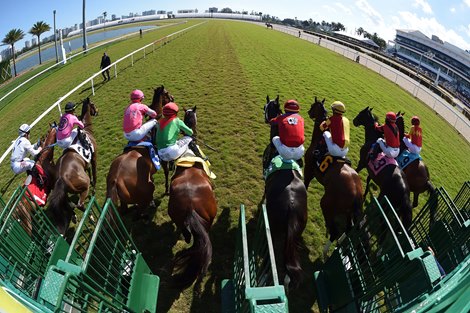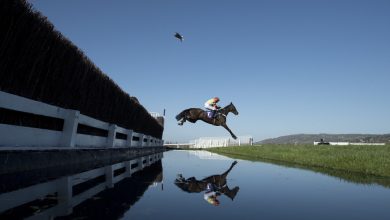Racing’s Many Efforts Shape New, Safer Environment

Fifteen years ago North American Thoroughbred racing began tracking the number of catastrophic injuries that occur during its races.
Those numbers for the first full year of The Jockey Club Equine Injury Database pointed to the rareness of these events. At that time the numbers revealed that in 99.8% of starts, these incidents do not occur. In seeing how rare these events are, some sports would have thrown up the victory flag. Not horse racing.
This sport, filled with breeders, owners, trainers, jockeys, and other participants who have always put the horse first, decided to make every effort to improve that number. This sport decided that these rare incidents needed to be made even rarer.
Since that first measure of these incidents 15 years ago, horse racing has spent millions upon millions of dollars targeted at making the sport as safe as it can be. From Woodbine to Del Mar, countless hours have been invested by women and men in the sport from the highest positions of leadership, to the regulators, to the boots on the ground.
As rare as these events were in 2009, statistically significant improvement has taken place. The work isn’t done but it’s also quite an accomplishment.
With this column, BloodHorse is launching a series of stories over the next five weeks examining the strides that have been made in equine safety and the positive opportunities on the horizon for more improvement.
In these 15 years, racing has learned that these rare incidents have multiple risk factors. That knowledge has resulted in the industry absolutely attacking areas of concern. Hard-earned victories have reduced the number of these incidents by 37.5% (through 2022).
While some outside groups have pointed fingers—sometimes deservedly so, sometimes in an effort to shut down racing—it’s been racing that has made an impressive commitment of time and treasure to make improvements.

Racing at Gulfstream Park
Consider that in 2023 the Grayson-Jockey Club Research Foundation provided $1.8 million to fund 14 new projects and nine continuing projects at 13 universities focused on improving horse health and safety. Since 2015 this organization has provided $12.3 million toward such efforts to improve equine safety and health.
Grayson-Jockey Club Research Foundation also was a driving force in the Safety Summit, which has helped further safety initiatives in Thoroughbred racing. The Jockey Club’s Thoroughbred Safety Committee has been a driving force in adding protections for horses.
State regulators and horsemen’s groups also have made considerable investments of time and money in improving equine safety. For instance, the Kentucky Equine Drug Research Council has targeted money for studies closely tied to improving integrity and safety in the racing environment. And the Mid-Atlantic region banded together to create a strategic plan to reduce equine fatalities that saw considerable success.
When setbacks have occurred, racing has found a way to improve. After safety issues at Aqueduct Racetrack, a task force in New York with strong industry representation in 2012 recommended ideas that would shape new standards in states and at tracks throughout the country, such as having a state equine medical director, requiring necropsies, protecting claiming horses, reducing pressure on horsemen to race, and tightening medication rules.
After problems at Santa Anita Park in 2019, California horsemen, tracks, and regulators put forward ground-breaking rules that have been used as a model by other states, tracks, and the Horseracing Integrity and Safety Authority. Those many efforts included increased oversight by regulatory veterinarians and new medication rules. Added protections were put in place for racing and workouts.
And of course HISA launched oversight of the sport’s safety initiatives in 2022 and HISA’s anti-doping and controlled-medication oversight—closely tied to safety efforts—launched last year. With HISA in place, the vast majority of states have never been better positioned to quickly put reforms and rules in place to protect Thoroughbreds throughout the country in a consistent manner.
In the weeks ahead, BH will:
- Look at improvements in industry understanding of racing surfaces.
- Examine track efforts to improve integrity and protect horses.
- Highlight technology used to examine horses ahead of races and workouts.
- Look at how protections for claiming horses have made a difference.
- Highlight a program providing hope for horses injured during races or workouts.
- Examine HISA’s ability to bring about swift and consistent changes when needed.
- Highlight how improved integrity has helped reshape a track.
- Look at the potential for sensors to bring further improvements.
When it comes to equine safety, racing has come a long way in 15 years and there’s a passion within the industry to do more. Consider that when Eight Belles broke down after the finish line in the 2008 Kentucky Derby (G1), racing could not even provide a definitive answer as to how frequently such incidents occurred. Today, 15 years of the EID have provided statistically significant information to shape our understanding of these incidents and numerous solutions have been put in place to address these problems.
These efforts have made a difference and there’s plenty of reason to believe more improvements are on the horizon.
In the weeks ahead, BH will be profiling this new, safer racing world.




